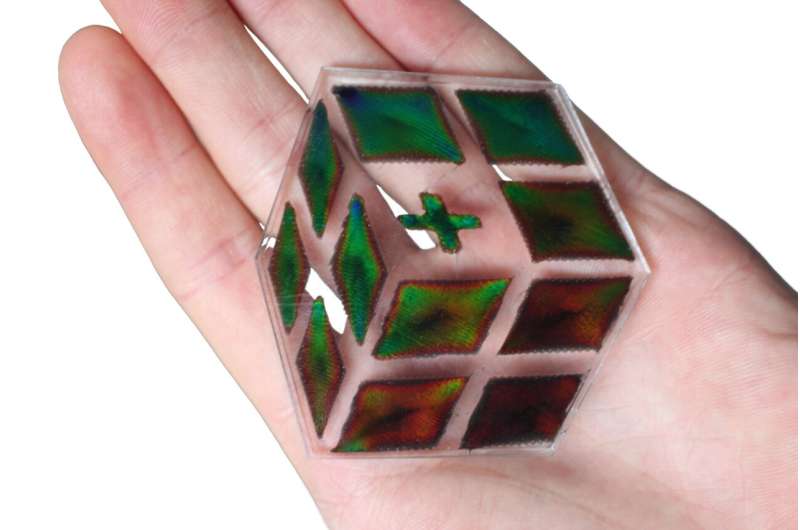
An elastic material that changes
color, conducts electricity, can be 3D printed and is also biodegradable? That
is not just scientific wishful thinking: Empa researchers from the Cellulose
& Wood Materials laboratory in Dübendorf have produced a material with
these exact properties on the basis of cellulose and carbon nanotubes. The work
is published in the journal Advanced Materials Technologies.
The researchers started with hydroxypropyl cellulose (HPC), which is commonly used as an excipient in pharmaceuticals, cosmetics and foodstuffs, among other things. When mixed with water HPC is known to form liquid crystals. These crystals have a remarkable property: Depending on their structure—which itself depends on the concentration of HPC, among other things—they shimmer in different colors, although they themselves have no color or pigment.
This phenomenon is called structural coloring and is known to occur in nature: Peacock feathers, butterfly wings and chameleon skin get all or part of their brilliant coloration not from pigments, but from microscopic structures that "split" the (white) daylight into spectral colors and reflect only the wavelengths for specific colors.
The structural coloring of HPC changes not only with concentration but also with temperature. To better exploit this property, the researchers, led by Gustav Nyström, added 0.1 weight percent carbon nanotubes to the mixture of HPC and water. This renders the liquid electrically conductive and allows the temperature, and thus the color of the liquid crystals, to be controlled by applying a voltage.
As an added bonus, the carbon acts as a broadband absorber that makes the colors deeper. By incorporating a small amount of cellulose nanofibers into the mixture, Nyström's team was also able to make it 3D printable without affecting structural coloring and electrical conductivity.
Sustainable sensors and displays
The researchers used the novel cellulose mixture to 3D print various potential applications of the new technology. These included a strain sensor that changes color in response to mechanical deformation and a simple seven-segment display.
"Our lab has already developed different disposable electronic components based on cellulose, such as batteries and sensors," says Xavier Aeby, co-author of the study. "This is the first time we were able to develop a cellulose-based display."
In the future, the cellulose-based ink could have many more applications, such as temperature and strain sensors, in food quality control or biomedical diagnostics. "Sustainable materials that can be 3D printed are of great interest, especially for applications in biodegradable electronics and the Internet of Things," says Nyström, head of the laboratory.
"There are still many open questions about how structural coloring is generated and how it changes with different additives and environmental conditions." Nyström and his team aim to continue this line of work in the hope of discovering many more interesting phenomena and potential applications.

 Previous page
Previous page Back to top
Back to top







